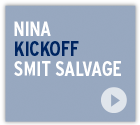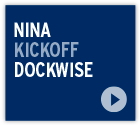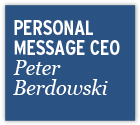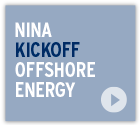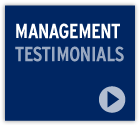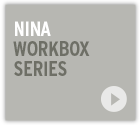NINA at Work articles
- Number 2 / 2024
- Number 1 / 2024
- Number 2 / 2023
- Number 1 / 2023
- Number 3 / 2022
- Number 2 / 2022
- Number 1 / 2022
- Number 3 / 2021
- Number 2 / 2021
- Number 1 / 2021
- Number 1 / 2020
- Number 4 / 2019
- Number 3 / 2019
- Number 2 / 2019
- Number 1 / 2019
- Number 4 / 2018
- Number 3 / 2018
- Number 2 / 2018
- Number 1 / 2018
- Number 6 / 2017
- Special edition / 2017
- Number 4 / 2017
- Number 3 / 2017
- Number 2 / 2017
- Number 1 / 2017
Media Library
TestimonialVideosNews Items
"SAFETY FIRST, THEN QUALITY, THEN PRODUCTION."
Project manager Bart Roeleveld about the NINA Start-up on the Hornsrev project.
Off the coast of Denmark, Boskalis is installing 50 cables at the Hornsrev wind farm. This is a technically and logistically challenging project, with many contractors and subcontractors and hired tradespeople. Good coordination is therefore crucial for safety and quality.
That is why the Start-up got a lot of attention.
The Hornsrev project is an EPC contract with a preparation phase of a year and a half, and three months’ execution. In terms of safety, the emphasis in the preparation was on assessing and minimising risks and optimising the work method. The focus has now shifted to communication, says OCM Danny Tomasouw. He leads the 55-person cable laying team, which works side by side with the crew of the Ndeavour. “Forty per cent of the team is contracted staff. Because it important that everyone clearly understands what needs to happen, we organised an operational Project Start-up first. We discussed the work from start to finish with staff, operations and ships’ crew. That’s a good way to get to know everyone right away, which makes it easier to talk to each other later.”
Discussions
This was followed by the NINA Start-up with the client Vattenfall. Project manager Bart Roeleveld: “Our goal was to determine our collective starting point. To explain what NINA entails and to deepen safety awareness using role-play. This approach was new for the client and led to constructive discussions. This is how we arrived at ‘safety first, then quality, then production’.”
Bart looks back with satisfaction on both Start-ups, but also sees points for improvement: “To increase the crew’s commitment, we should have come together from the start of the project preparation. This lowers the threshold to ask questions. And maybe we should organise broader Start-ups? Because it’s not about my safety, but that of the men on deck. How do we get the message across, so that they are also conscious of putting safety above production?"
On board
The question is then: how do you get and keep NINA alive on board? Danny: “We have a toolbox talk on deck and on the bridge every morning when we also discuss any SHOC cards. We emphasise that everyone is responsible for their own safety. I personally indicate that I support everyone in their safety choices, but that I do expect them to make choices. And that they do a risk analysis for themselves (the YES-Scan) before starting a task. Know what you’re doing when go onto a TP (transition piece) for example, because if something goes wrong there’s not much you can do in the middle of nowhere.”
Support
It is important for everyone to feel supported in choosing safety over production. That begins with agreements in the NINA Start-up and has to be reflected in everyone’s behaviour in practice. This is the connecting thread that keeps everyone engaged and motivated, but it is a thin thread. “Ultimately, everything becomes routine,” says Bart. “That’s why it’s important to keep organising new incentives, such as workboxes and SHOC teams. I want to and need to be more proactive about this myself. It’s still too noncommittal now. We need to work on this. Because for the men on deck, safety is never noncommittal.”
“It is important for everyone to feel supported in choosing safety over production.”
